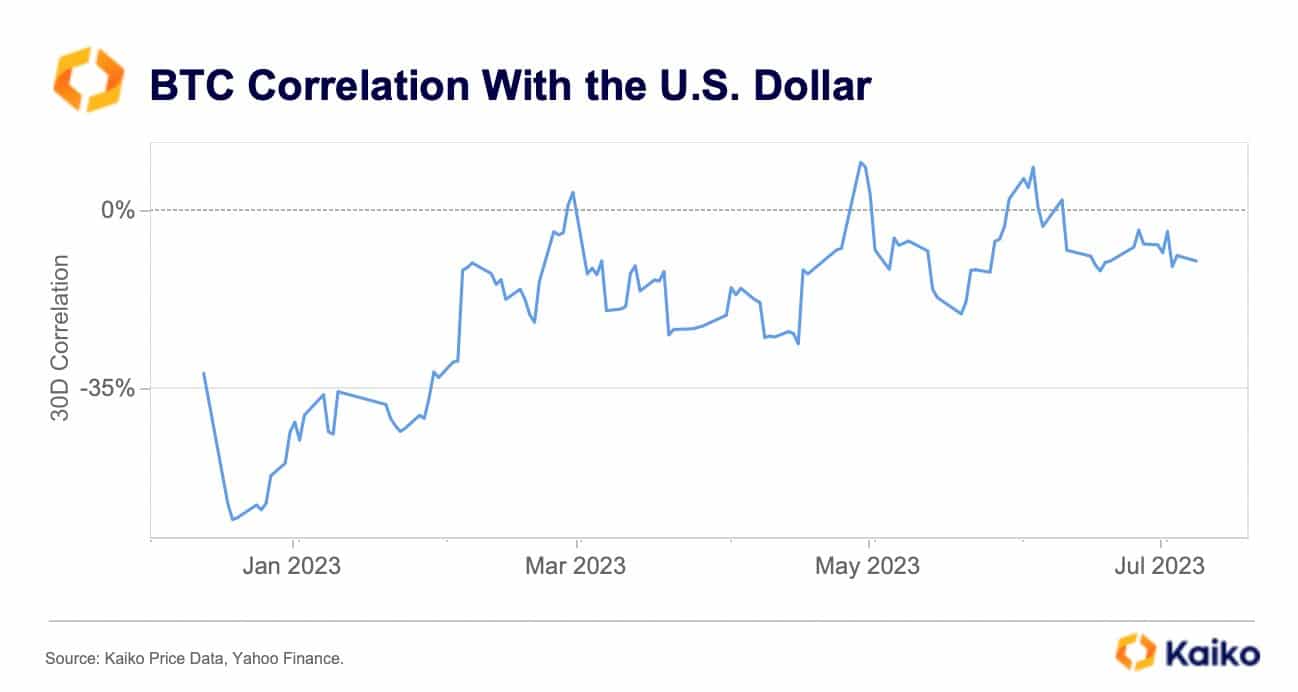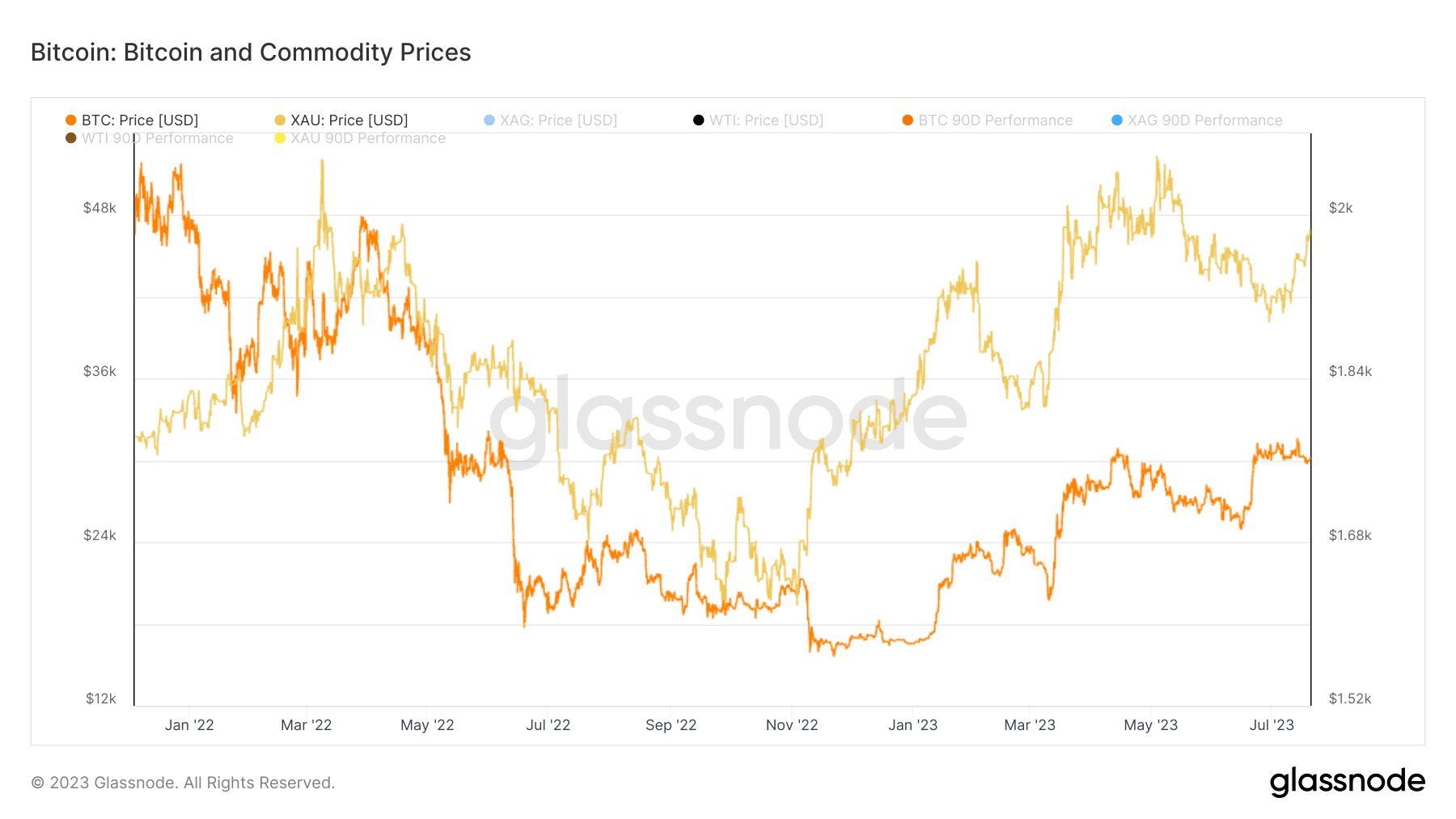- Historically, it has been determined that Bitcoin, the most valuable digital asset in the world, has a negative relationship with the US Dollar (USD).
- The inverse relationship between BTC and USD has decreased from -61% to -10% since the beginning of the year, almost to a negligible level.
- The US Dollar Index (DXY), established by the US Federal Reserve, is a relative measure of the strength of the USD against six foreign currencies.
What does the weakening negative correlation between Bitcoin and the Dollar mean for Bitcoin in 2023?
The Negative Correlation Between Bitcoin and the Dollar Has Decreased
Historically, it has been determined that Bitcoin, the most valuable digital asset in the world, has a negative relationship with the US Dollar (USD). This essentially means that when the price of one asset rises, the other falls, and vice versa. However, this relationship has largely disappeared in 2023.
According to crypto market data provider Kaiko, the inverse relationship between BTC and USD has decreased from -61% to -10% since the beginning of the year, almost to a negligible level.
The US Dollar Index (DXY), established by the US Federal Reserve, is a relative measure of the strength of the USD against six foreign currencies. Investors look at the dollar index as a reliable tool to evaluate US economic growth and demand for the dollar. Interest rate hikes implemented by the Fed create significant upward pressure on the DXY, as this policy increases demand for the dollar from foreign investors.
Throughout 2022, the dollar index performed better than other currencies, reaching its highest level in 20 years at 114.18 in September as the US Federal Reserve resorted to significant increases to reduce inflation. The DXY strengthened by more than 8% in 2023. In contrast to this trend, the broader crypto market was struggling with a punishing bear market during that period.
Bitcoin lost nearly 65% of its value, hitting a low of around $16,000 in 2022. A series of crashes undermined user confidence in the crypto market and especially in BTC, leading capital to flow into safe havens such as the USD. As a result, the negative correlation between the two assets strengthened.
A Reversal in 2023
The fate of the crypto market changed dramatically in 2023 due to a strong recovery. The price of BTC increased by 87% since the beginning of the year. On the other hand, the dollar index reached its lowest level in 15 months last week after a period of sideways movement, following encouraging US inflation data.
The weakening of the negative correlation since the beginning of the year means that issues related to US dollar movements will not have significant implications for BTC. It allows it to be marketed as an asset class increasingly independent of macroeconomic triggers such as US economic statistics, unemployment data, or interest rate hikes.
Bitcoin vs Gold
Bitcoin is often referred to as “Digital Gold” because, similar to physical gold, it is widely accepted as a safe haven asset. However, the performance of the two assets in 2023 revealed an interesting picture. As mentioned above, BTC saw an impressive 87% growth, while Gold [XAU] managed to achieve only about 8% gains since the beginning of the year.
To put things into perspective, the increasing value of Bitcoin against Gold means that the market may prefer it as protection against inflation.
However, due to BTC’s reputation as a volatile asset, investors should carefully evaluate this development. The gains of BTC in 2023 can quickly be reversed due to the hostility of the US regulatory environment towards the broader crypto market.


